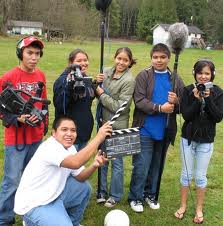In furthering my interest into the Chief Atahm Shuswap Immersion school, I wanted to look into some general information about the Adam’s Lake Indian Band and to read up on their history.
http://www.adamslakeband.org/?q=node/1
Within this site I checked out some of the upcoming events on their calendar. One that caught my eye was the Dream catcher conference that is held in September. The conference this September will be their 5th annual meeting. I have included a Youtube video link that shows some highlights of the conference which is aimed towards aboriginal youth.
https://www.youtube.com/watch?v=WTAD-9WqXU8
When watching this video, I realized the overwhelming influence of the English language and how, especially in the popular entertainment industry, our First Nation youths are totally immersed. Many of them chose to perform popular English language songs at their fun talent show. There were some who sang in Secwepemc and played drums and sang, which offered and eclectic, comfortable atmosphere for the youth. One boy, who sang O Canada, even made fun of the words in the song by repeating after the lyrics “Glorious and Free”….”o so free”. Which got me thinking of the recent graduation ceremonies at my school in 100 Mile House just last weekend. When the chief of our local Canim Lake Band (also Shuswap), Mike Archie, got up to sing the traditional welcoming and play his drum, I was wondering why the non-aboriginal students didn’t know these traditional songs. Just then, I heard patches of voices in the crowd starting to sing along with Mike. It gave me shivers. I then looked up at the graduates and many of our First Nation grads (who were all easy to find since they are all wearing nice, white stoles with the Canim Lake Band symbol embroidered onto them), were singing their hearts out along with their chief. If everyone knows O Canada, then I’m sure that all of us could learn some traditional songs. I can just picture the graduation ceremonies with the entire crowd belting out the Shuswap welcoming song together. That would be amazing.
Also, what I liked about this conference was that it worked with youth on traditional Shuswap activities such as cleaning and smoking fish and paddling a canoe, which are so important when trying to allow these youth to discover their identities. This reflects the video discussion with Dr. Lee Brown, when he stresses the importance of “emotions organizing themselves as values, and values identify themselves as identity. Getting the youth emotionally and physically involved with their heritage with help them to feel good about themselves and how to develop healthy self confidence.
One final thing about this video from the conference that I noticed was that along with the traditional aspects of Shuswap life, students were welcome to use their modern western influences, especially with technology (working with cameras and video, using projectors, singing in microphones with music accompaniment etc.). I feel that this is extremely important because it allows these aboriginal youth to be proud of their heritage and also allows them to share with and participate in activities positively with the dominant, non-aboriginal mainstream culture.
Me7 qilqeltes te su7ec, have
a nice day

